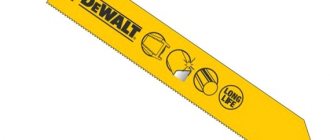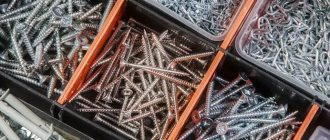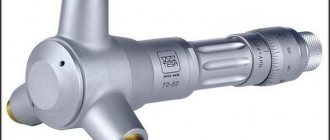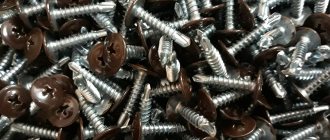What determines the efficiency of a block?
From roller diameter
The effectiveness of the roller mechanism depends on whether the rope's capabilities are optimally used. Rollers with a large diameter counteract sudden bends in the rope. This makes the system easier to control and extends the life of the cables.
From bearing type
There are two types:
- self-lubricating bushings - efficiency is about 70% of the force applied to the system (it is advisable to lubricate);
- sealed ball bearings – efficiency up to 90% of the applied effort (does not require constant maintenance).
Rollers are classified according to sizes, shapes and materials from which they are made. The choice of material is important to lighten the weight. It has virtually no effect on performance unless we are talking about extreme loads.
10.3. The simplest devices for lifting work
Home / Publications / Literature / Bookshelf / Handbook of maritime practiceThe jack is the simplest lifting mechanism of small size and weight, which gives a large gain in strength. Used for lifting heavy loads to a small height. According to the principle of operation, jacks are divided into screw, rack and pinion and hydraulic.
Screw jacks (Fig. 10.22, a) have the following data: load capacity 1-10 tf at a lifting height of 250-400 mm; own weight 15-100 kg. Convenient for use in cramped conditions. The movable carriage of the jack allows you to accurately position it under the load being lifted.
Rack jacks (Fig. 10.22, b), having a low lifting foot, provide lifting of a load weighing 1-10 tf to a height of 300-400 mm. The dead weight of the jack is 40-80 kg. The braking device is made in the form of a ratchet with pawls.
Hydraulic jacks (Fig. 10,22,0) are widely used when performing work related to lifting very heavy loads (10-30 g) on small height (up to 1 m). The possibility of using several jacks is due to the fact that water or oil is supplied under pressure under their pistons from one pump, which ensures simultaneous stroke of all pistons and the same height. Hydraulic jacks are stopped by shutting off the supply of working fluid.
Rice. 10.22. Jacks: a - screw; b - rack and pinion; c - hydraulic; 1 - head; 2 - ratchet; 3— handle; 4 - rack; 5 - oil seal; 6 - piston; 7 - pump. 8 - tap; 9 - cylinder; 10 - paw; 11 — carriage; 12—bed; 13 - nut; 14 - screw
When using jacks, you should always remember that, given their significant load-carrying capacity, the supporting areas (under the head and foundation) require sufficient strength and rigidity of the structures used.
A lever is a rigid, inflexible, straight or broken rod (Fig. 10.23), having a fulcrum (rotation) O, as well as points A and B, to which two forces are applied: the applied force P and the weight of the load W.
Rice. 10.23. Types of straight and broken levers
The arms of the forces W and P are the distance of the points of application of these forces from the point of rotation of the lever O, equal in all cases to the length of the perpendiculars drawn from the point of rotation O to the direction of the forces and P.
It is known from a physics course that a lever will be in equilibrium if the products of the forces applied to it by its shoulders are equal to each other:
Scrap metal is the simplest lever and is widely used for lifting heavy loads when placing carts or rollers under them, as well as for winding slings. If the metal crowbar is equipped with a roller on its toe, then it allows you to easily move the load a short distance or turn it in the desired direction. The crowbar makes it possible to obtain a significant (up to 20 times or more) gain in the applied force when lifting and moving a load.
Example
.
Determine the force on the handle of a roller crowbar 1.5 m long (the length of the toe of the crowbar is 8 cm) to lift a box weighing 1.5 tons and place slings under it. Solution. To lift one side of the box, it is necessary to apply a force that is half its weight: The lever gives a gain in force equal to the ratio of the length of the crowbar to the length of the toe: Force P, which must be applied to the handle of the crowbar: V a g a - scrap metal of considerable length or a strong wooden log.
The vaga has high support points and allows you to lift heavy loads to a considerable height. In Fig. Figure 10.24 shows the use of waggons to create a roll on small ships, for example, for repairing the underwater part. When sand is added to the box built on the end of the beam, an increasing roll of the ship will be created, i.e. the equality Pl=Wa will take place.
Rice. 10.24. The use of a waterline to create a heel on small ships: VL - waterline before the ship heels; B1 L1 - waterline after heeling of the vessel; W is the weight of the vessel; C is the center of the immersed volume; P - weight of bulk cargo
Drawers are long horizontal levers (metal or oak) used to manually rotate a capstan or gate when pulling small vessels ashore. The lever-gate system can be used in many other similar works.
Wedge
- a type of inclined plane on which a load is held (Fig. 10.25).
Rice. 10.25. Decomposition of forces on an inclined plane
From the similarity of triangles NOK and ABC, it follows that, i.e., in equilibrium, the force acting parallel to the base of the inclined plane is as many times less than the force acting perpendicular to it as the height of the inclined plane is less than its length. The wedge (Fig. 10.26) gives a significant gain when subjected to impact force (the blow of a heavy hammer or sledgehammer). From the parallelogram of forces ABCD it follows that the gain in force given by the wedge is equal to the ratio where N is the pushing force; P is the impact force of the hammer.
Rice. 10.26. Application of a wedge: a - wedging of cargo; b - wedging of the keel block
The wedge is often used for wedging heavy loads when placing slings under them, for wedging (rigidly securing) cargo on a ship, keel blocks when the ship is docked or when installing it on slips and slipways.
The roller has found wide application when performing work related to the movement of various loads. Typically, three or four rollers of the same diameter are used for this. It is more expedient to use metal rollers consisting of pipes of sufficient rigidity. If possible, the roller should be thicker, since the force required to move the load decreases in proportion to the increase in the diameter of the roller.
If the roller (Fig. 10.27) covers a distance equal to the length of its circumference in one revolution, then the center of the roller will move the same distance; over the same distance the LV will move along the skating rink and the load, and relative to the deck it will travel a distance twice as large as the skating rink.
Rice. 10.27. Roller action: A - end of roller rotation; B - beginning of the roller rotation
If the rollers run parallel to one another, the movement of the transported load occurs rectilinearly and perpendicular to the rollers. If during movement the load needs to be turned, the rollers are placed at an angle, and then the center of rotation of the load will be located approximately at the point of intersection of the axes of the rollers.
The gate is the simplest lifting machine. It consists of a shaft onto which a cable or chain is wound using one or more handles (knobs), and a frame. Depending on the location of the gate shaft, it can be horizontal (Fig. 10.28) and vertical (Fig. 10.29).
Rice. 10.28. Hand winch (horizontal gate): 1 - bearing; 2 — brake handle; 3 — rod-bolts; 4 - handle; 5 - frame; 6 - shaft; 7 — cast iron band brake wheel; 8 — band brake; 9 - gear transmission
Rice. 10.29. Capstan (vertical collar): 1 - embossing; 2 - drum; 3 - working end of the cable; 4 — gate fastening; 5 - free end of the cable
According to the principle of operation of the gate, it is a broken lever, one arm of which is equal to the radius of the circle described by the handle, and the other to the radius of the shaft. Theoretically, the gain in strength at the gate is equal to the ratio of these radii.
To obtain a significant gain in strength when lifting or pulling a load, differential gates are used, in which one half of the drum has a larger diameter than the other. When lifting a load, the cable is wound around a part of the drum with a larger diameter and comes off the drum with a smaller diameter. When the handle is rotated in the opposite direction, the load will lower.
Force P in kgf, which must be applied to the handle of the hood:
where W is the weight of the load being lifted, kgf; d1 and d2 are the diameters of the corresponding parts of the drum (d2>d1), mm; l—radius described by the gate handle, mm.
For self-braking of the load when the rotation of the handle stops, it is necessary that the difference in the diameters of the drum is no more than 10%, i.e. d1~0.9 d2. Then, due to friction in the blocks, drum bearings and cables wound around the drum, the gate remains locked in any position.
Example
. Determine the pulling force of a vertical gate with 10 people working on its five openings. The diameter of the gate shaft is d=400 mm, the length of the embankment (from the axis of the shaft to the middle point of application of the force of two people) is 3.2 m. The effort of one person during long-term work on the embankment is approximately 10 kgf.
Solution. The gain in force given by the gate will be equal to the ratio of the embossing length l to the radius of the gate shaft
The force on the knockouts created by 10 people: From here the force on the gate shaft will be Forward Contents Back
Single blocks
Such rollers are used in simple systems to perform various tasks. The main one is changing the direction of the rope. If the WLL of a single block is 4kN, this means that it can lift a load of 200 kg. This is logical, since at least the same force will be applied on the other side of the rope. An MBS:WLL ratio of 3.5 or 5 to 1 is maintained.
Refilling chain hoists
Reeving is a procedure for changing the location of pulleys and the distance between them. The purpose of this operation is to regulate the speed and height of lifting loads in accordance with a certain pattern of cable passage through the blocks of the lifting mechanism. There are the following types of reserve:
There is also variable reeving. It can be either double or quadruple. The movable rollers are mounted on several movable cages held by a rope. The reeving ratio is changed by lowering the hook suspension onto the support while reeling in the rope.
Source
Double rollers
Such mechanisms can be divided into two types:
- with parallel arrangement of rollers - suitable for organizing pulleys, have an additional attachment point, which is convenient to use when lifting loads;
- with a sequential arrangement of rollers - designed for movement along inclined railings, used for equipping complex pulley systems.
Load calculation is different here. In the system, the MBS:WLL ratio drops to 4 or 3. So, if MBS is 36kN, you can calculate WLL 2x2kNx2rollers = 8kN.
Rollers on axle
Such systems are better than others at preserving ropes at bend points. Some have vertical and horizontal rollers and can be used to change the direction of force. Systems consist of individual modules and links connecting them. The number of these modules depends on the relief of the surface that needs to be skirted.
Manufacturers mark rollers with efficiency indicators. They range from 70% to 97%. The more expensive the bearings used in a system, the higher the efficiency, since the system's efficiency is lost as friction increases.
Rollers with clamp
The combination of a roller with a clamping mechanism allows you to record the reverse motion of the rope. This feature is very useful when lifting large loads and during rescue operations. Blocks can be used when moving along vertical railings.
You should not use this type of blocks for crossing or dynamic belaying. Sudden jerks can lead to damage and breakage of the rope clamped in the fixing unit.
Although the structure of the roller does not change, you need to remember about the eccentric with the clamp. With roller clamping block WLL=2,5kN it is possible to lift 250kg. There is no longer any need to divide the specified value in half. The load is designed to be clamped and acts on one side only. The carbine needs to be clicked into it from below. Otherwise, the clamp will quickly bend.
There are many more types of roller blocks. Most often, they are designed for a narrow specification. These could be rollers for arboriculture, for passing ropes with knots tied. Specialists who often have to deal with the need to lift loads use swivels. They argue that the quality of roller systems determines the speed and force that must be applied, and ultimately the outcome of very important operations.
Difference between block and roller
These are closely related concepts that are often used colloquially as synonyms. In fact, there is a difference between them. So, the roller is directly the wheel itself with a groove around its circumference. Essentially this is the same pulley that is used to operate the drive belt. The block is a more complex design. It is a roller installed in the housing. In its minimal design, the latter is a fork with an axle inserted between its halves. The roller itself rotates on it. Thanks to the presence of the housing, the unit can be suspended and also moved.











